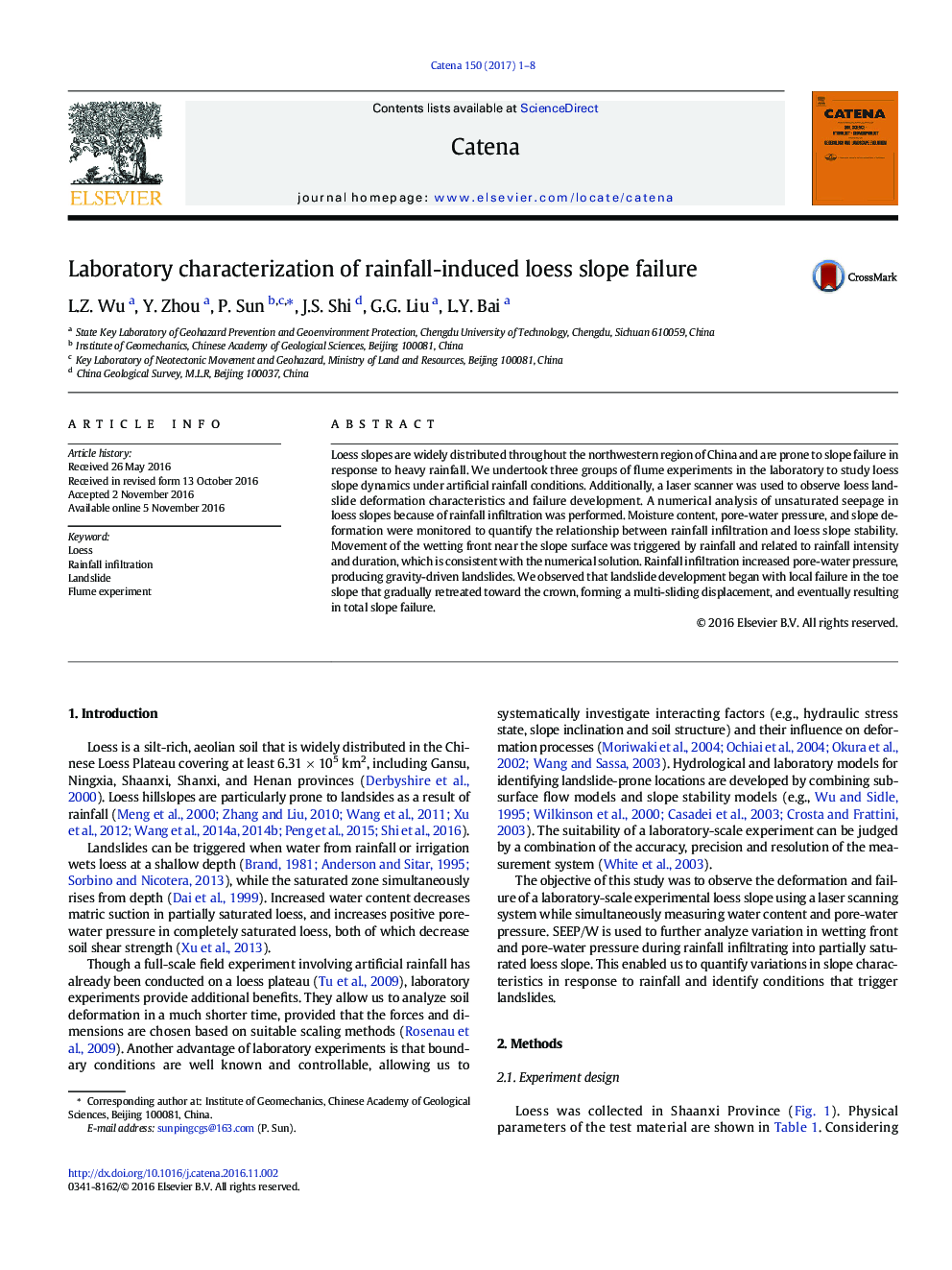| Article ID | Journal | Published Year | Pages | File Type |
|---|---|---|---|---|
| 6407623 | CATENA | 2017 | 8 Pages |
â¢We used rainfall experiments to quantify the loess soil slopes undergoing failure.â¢Slopes with small gradients required longer rainfall periods.â¢Rainfall softened the toe slope, making it prone to failure.â¢Rainfall-induced loess landslides are multi-sliding retrogressive landslides.
Loess slopes are widely distributed throughout the northwestern region of China and are prone to slope failure in response to heavy rainfall. We undertook three groups of flume experiments in the laboratory to study loess slope dynamics under artificial rainfall conditions. Additionally, a laser scanner was used to observe loess landslide deformation characteristics and failure development. A numerical analysis of unsaturated seepage in loess slopes because of rainfall infiltration was performed. Moisture content, pore-water pressure, and slope deformation were monitored to quantify the relationship between rainfall infiltration and loess slope stability. Movement of the wetting front near the slope surface was triggered by rainfall and related to rainfall intensity and duration, which is consistent with the numerical solution. Rainfall infiltration increased pore-water pressure, producing gravity-driven landslides. We observed that landslide development began with local failure in the toe slope that gradually retreated toward the crown, forming a multi-sliding displacement, and eventually resulting in total slope failure.
